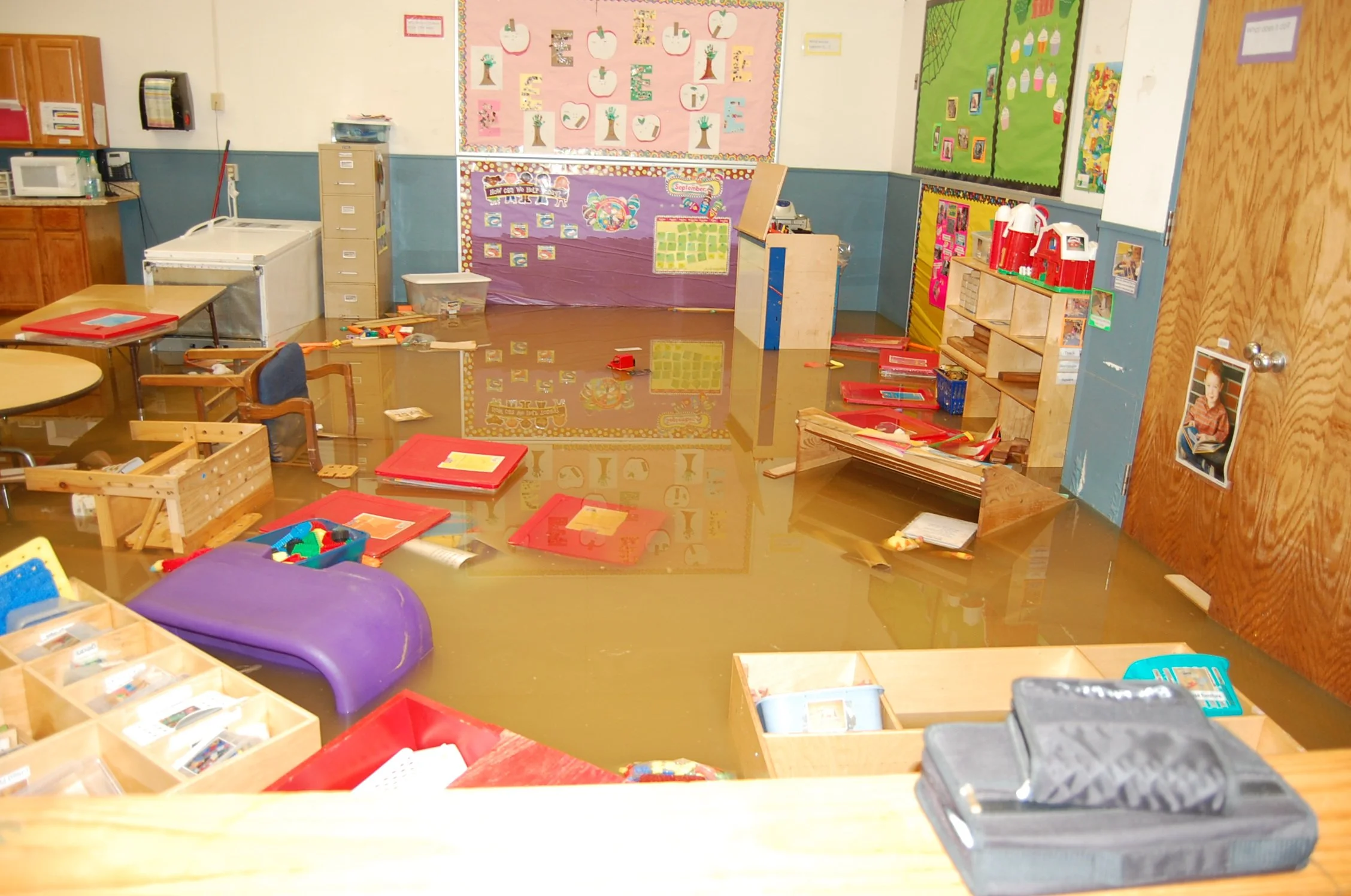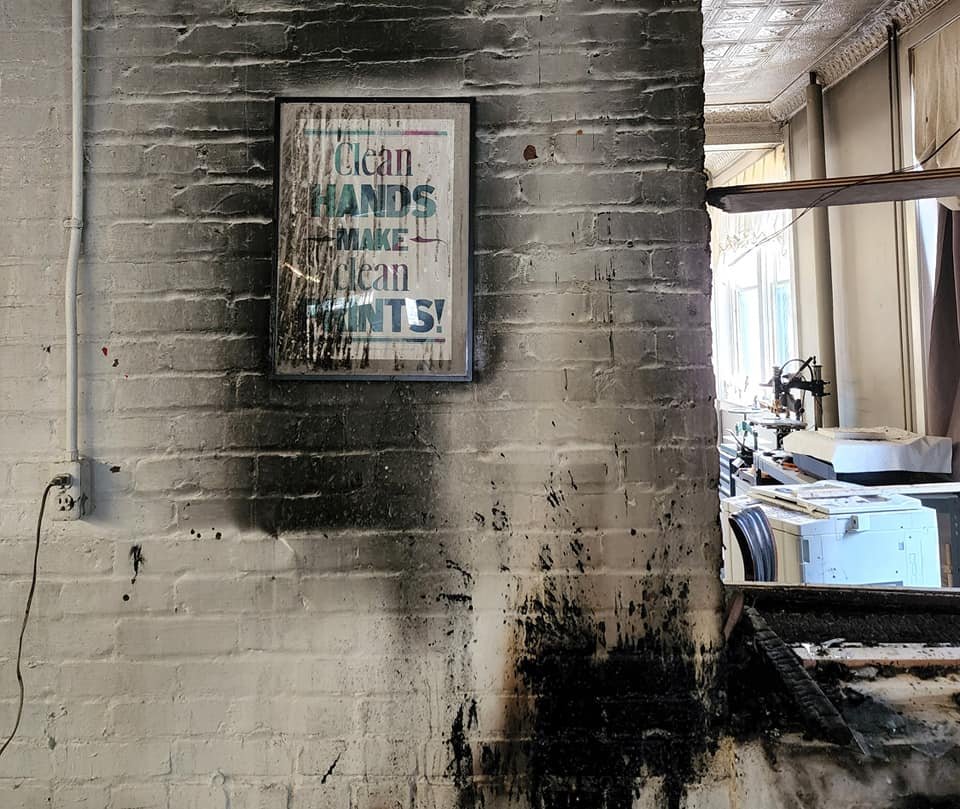Although no one would ever wish to go through a disaster, experience is a powerful teacher. We caught up with four local businesses that have weathered unexpected disasters in recent years and asked them to share the wisdom they gained through their recovery process.
YMCA of Frederick County
The Incident
In 2015 and 2018, the Y sustained flooding from overrun storm drains in the local drainage layout. The facility had 4 inches of water in some areas and 10 feet in the basement area. Each time, the damage was over $1 million dollars.
What was the most challenging part of the recovery?
The first time: Figuring out the process of flood recovery/restoration and the return of services. The first time, we also did not have insurance so the heavy lifting was CEO/CDO raising money to fund the repairs.
The second time: We had insurance and had a better handle on the process - but it was the disappointment in doing it again.
What resources were most helpful to your business during recovery?
Many of our board members, business partners, and community members came to our aid both times. We had people showing up at all hours of the night and day working and supporting coverage & oversight for the building. We still get calls from folks during heavy rains asking if we are ok.
Following the second flood, we also received help from local government and FEMA. We are currently working on remediation efforts that FEMA is funding 75% of.
What Tips do you have for businesses creating a disaster preparedness plan?
Talk to your neighbors and other businesses to see what issues have happened in area.
Use the resources of MEMA/FEMA to help guide your plans. Many restoration type companies will help map out a plan as well.
Regarding insurance — Have inventory via phone/video/notes of items in your business – this will be important! We also learned that even with good insurance, certain coverages were actually not enough to replace the actual cost of the equipment, ie. boilers.
Having a strong communication plan or phone tree created to alert key stakeholders of what you are experiencing is a good idea and a must have. Show as many folks the initial damage as soon as you can.
If you are a business that has a facilities or maintenance staff, it is critical that that person in your organization treats every vendor with respect and establishes strong relationships with each vendor. As an example, when we had both floods, our electricians prioritized the YMCA and sent folks to our site where they remained basically 20-24 hours a day for over a month until we had the electrical issues and repairs resolved. That was unprecedented.
Frederick Book Arts
The Incident
This June a fire broke out in the middle of the night at Frederick Book Art’s W Patrick location.
Thanks to the quick response of the local fire department, everyone living in the apartments above were safely evacuated and the fire was contained. Nevertheless, the incident left behind a good bit of damage to the studio.
How can a business prepare for a Diasaster like a fire?
My first response to your question about preparing for a fire is: Don't have one! The fire at the Frederick Book Arts Center (FBAC) had its start in an electrical malfunction - whether that was old wiring in the walls or old wiring in an appliance that somehow caused a fire. Perhaps the fire would have happened no matter what, but there may have been things that could have been done to avoid it in the first place.
We have fire proof bins for inky paper, but I knew someone who lost a studio due to spontaneous combustion of rags in a trash can. I also knew another person who lost their studio because of too many extension cords being used and overheating that caused a fire to ignite. ... Prevention will be foremost on our minds going forwards because we know the waste of time and energy of fire recovery.
What has been the most challenging part of recovery?
At the outset we really didn't know what we needed to do. Understanding what the insurance company needed, who to call to clean, the way the fire inspection works etc. In the end, having good insurance that will cover our expenses will have proved to be well worth it. But the time everything takes has been tough. For us specifically, the amount of work it has taken to move everything out in order for our place to be restored and cleaned has been difficult on our community.
We had much more damage due to smoke and the time that our equipment was exposed to the moisture from the soot than from the fire itself.
What resources have been most helpful to your business during recovery?
People who have been through the experience of a fire reaching out and helping us understand the process has been great. The willingness of our volunteers to come and help and the generosity of our community has been amazing.
Having the library donate a room for us to continue running classes was essential for us.
How did the event change your business?
We basically came to a halt- it was a mini- COVID flashback- but having had that experience, we used the time to more fully emerge from our pandemic footing. We have only slowly been getting back to where we thought we were at the start of the pandemic but by having time to regroup, we hope to be much closer to the organization we believe we will one day be because of the time we have invested in our team.
What advice do you have to businesses who were facing an Emergency?
I think the first advice is not to panic. It is a little like any near death experience — it allows an organization to look at itself clearly and see what has been working within the organization and where you want to go. Remember that rehabilitation after a heart attack can have a person re-conditioning their body just to walk. It seems like you will never get through and you just want to give up, but with many hands to help, and using the insurance money to pay for what you need to get running again. The energy of all the goodwill will help you get back in the game and hopefully in a way that is nearer to the path you want for your organization —or even with a new direction that makes things more interesting.
FBAC had the room to launch a social enterprise screen printing studio because of the time we had to wait to be back in our space ... this is one of the many silver linings to come from our fire ordeal.
Way off Broadway
The Incident
As with most things at Way Off Broadway, nothing is ever "normal." But we're ready for that. Which is why when at 12:02 a.m. July 5th when I got the message that someone had driven their car into the theatre, my reaction was, "Of course they did!" After spending a few hours that (early) morning cleaning up the mess so we could see the full scale of what had happened, we realized that the majority of the damage was to the building and not as much the business itself.
How did you address such an unexpected Problem?
Clearly, we needed to cover the giant hole in the building, so we basically built a box around the wall where the damage occurred. So our guests didn't have to stare at a wall of plywood, we integrated it into whatever show we were doing at the time by decorating it and making it look as though it was just an extension of the set -- the magic of theatre!
What was the most challenging part of the incident/recovery?
We did lose use of several tables due to the new bump out in the theatre though which forced us to sell less tickets -- which we were already doing due to the COVID restrictions, so our ticket sales were limited even further. The loss in potential revenue was the worst part of the incident. We were lucky that the person who drove their car into the building took full responsibility for what happened so their insurance covered everything. However, getting the wall repaired took much longer than originally estimated. This was due to a number of factors, but one of the greatest was the ability of the contractor to obtain the supplies they needed. All of this happened just as the supply chain crisis was really beginning to hit its stride. In the end, it took almost eight months for the repairs to be completed.
WHAT ADVICE DO YOU HAVE TO BUSINESSES CREATING A DISASTER PREPAREDNESS PLAN?
Of all the things we've thought could happen and we've discussed, a car driving into the building was just not one we were prepared for. At this point, all we really know -- with as unpredictable as everything has become in recent years -- you just need to be ready to analyze whatever the situation is and quickly decide on a plan of action. You also need to realize no matter how prepared you are or how much you have planned for, things are still going to happen that you would never have thought of. So you just have to adjust as quickly as possible and keep moving.
LSWG CPAs
The Incident
In 2018, due to a heavy rain storm, our roof drains overflowed and water made its way into the LSWG offices. While the restoration efforts were a huge undertaking, we were fortunate enough that we could remain operational. The damage was contained to a portion of our office, allowing us to continue to occupy our space.
What was the most challenging part of the recovery?
The most challenging part of the incident and recovery was learning to adapt to stay in business as if nothing had happened, ensuring we continued to serve our customers to the level we always had.
What resources were most helpful to your business during recovery?
During the recovery, we utilized a mitigation service to assist in the clean-up/restoration efforts, implemented office sharing and shifted some employees to remote work. In order to do this, it required partnership with our IT provider to relocate equipment/workspaces. Having established relationships with local companies allowed us to act quickly and get restoration efforts underway. Staying above the curve in technology made it easy for us to adapt and remain open without interruption.
WHAT ADVICE DO YOU HAVE TO BUSINESSES CREATING A DISASTER PREPAREDNESS PLAN?
Focus first on getting customer facing individuals back up and running and allow non-customer facing individuals to handle coordination of mitigation efforts. This will ensure your customers are taken care of, which is top priority.
We are so glad that these companies were able to mitigate losses and bounce back to business.
While it is challenging to navigate a catastrophic business incident, there may be programs and resources to support your recovery. If your company is experiencing challenges like these, don’t hesitate to reach out to the Department of Economic Development for any insight or connections at 301.600.6360.





